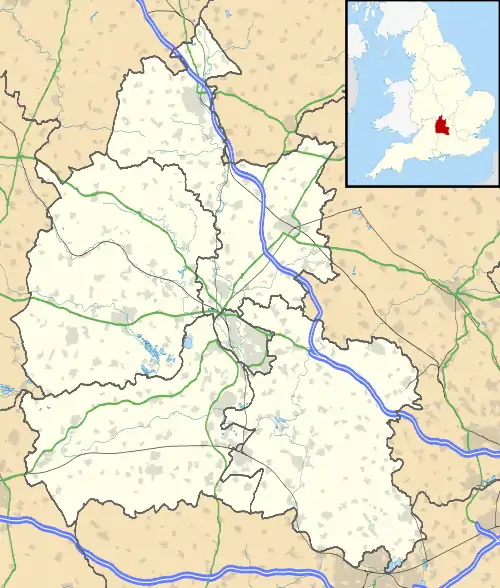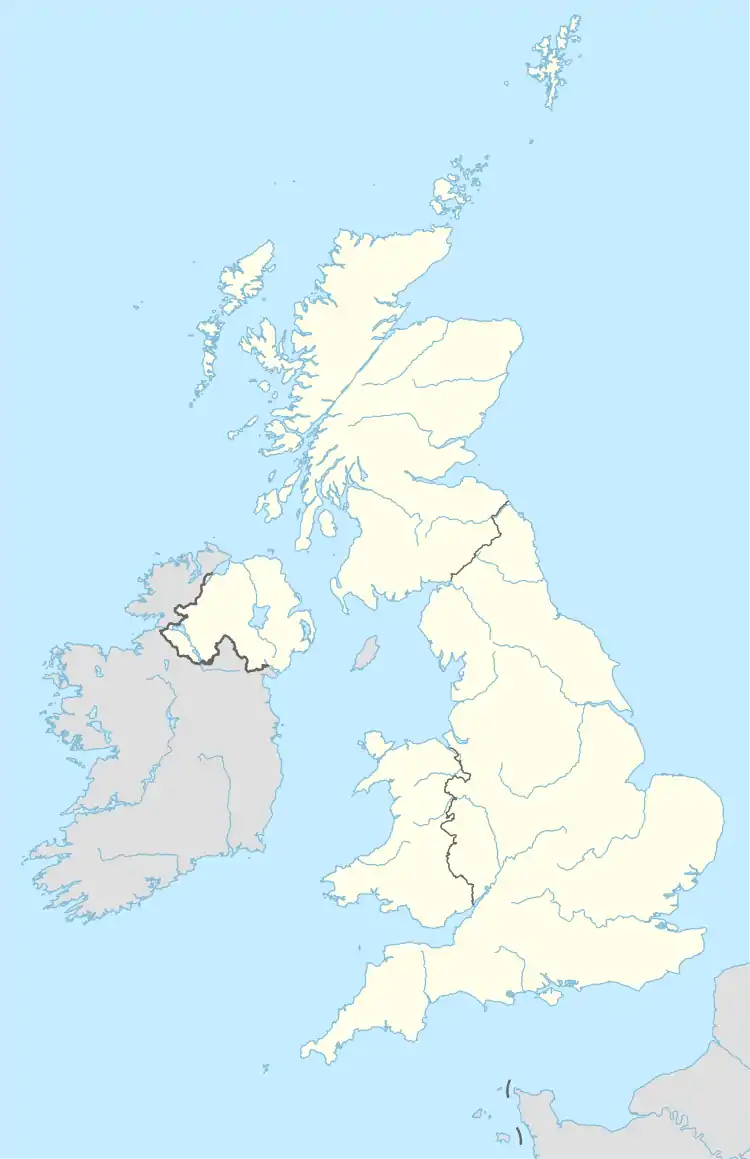RNAS Culham (HMS Hornbill)
Royal Naval Air Station Culham (RNAS Culham, also known as HMS Hornbill) was a former Royal Navy, Fleet Air Arm station near Culham, Oxfordshire. It opened in 1944 as an Aircraft Receipt and Despatch Unit for the Royal Navy.
| RNAS Culham (HMS Hornbill) | |||||||||||
|---|---|---|---|---|---|---|---|---|---|---|---|
| Culham, Oxfordshire in England | |||||||||||
 RNAS Culham Shown within Oxfordshire  RNAS Culham RNAS Culham (the United Kingdom) | |||||||||||
| Coordinates | 51°39′31″N 1°13′38″W | ||||||||||
| Type | Royal Naval Air Station | ||||||||||
| Site information | |||||||||||
| Owner | Admiralty | ||||||||||
| Operator | Fleet Air Arm | ||||||||||
| Site history | |||||||||||
| Built | 1933 | ||||||||||
| In use | 1933-1960 | ||||||||||
| Battles/wars | Second World War | ||||||||||
| Airfield information | |||||||||||
| |||||||||||
The ground layout was typical of many bomber stations, with three runways. However it had many hangars, mostly sited around the field's perimeter. Initially HMS Hornbill was used to train reservists based in the Thames Valley area using several different types of aircraft including Supermarine Seafires, Hawker Sea Furys and North American Harvards. In May 1947 the Photographic Trials and Development Unit was based at HMS Hornbill, and in 1951 1840 Naval Air Squadron operated from the airfield for a short time. Ab initio flight training of cadets from Britannia Royal Naval College, Dartmouth, flying primary gliders, was also undertaken here in the early 1950s.
The following units were here at some point:[1]
- No. 1 Ferry Flight
- 739 Naval Air Squadron
- 812 Naval Air Squadron
- 1830 Naval Air Squadron
- 1832 Naval Air Squadron
- 1832A Naval Air Squadron
- 1832B Naval Air Squadron
- 1835 Naval Air Squadron
- 1836 Naval Air Squadron
- 1840 Naval Air Squadron
The airfield closed on 30 September 1953 and the Admiralty subsequently used it as a storage facility. In 1960 the airfield was transferred to the United Kingdom Atomic Energy Authority for use in nuclear and atomic research. The Joint European Torus (JET) nuclear fusion project is now based at the site.
RAF Beccles was a temporary lodging area under Culham's administration, and as such was called HMS Hornbill II.
References
- "Culham (Clifton Hampden)". Airfields of Britain Conservation Trust. Retrieved 17 May 2020.